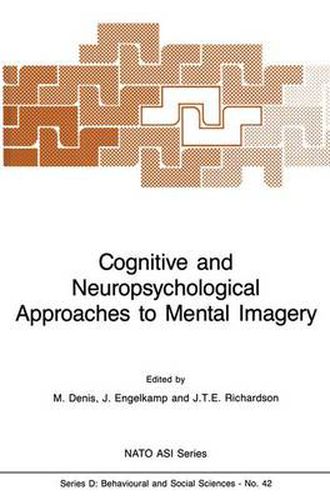Readings Newsletter
Become a Readings Member to make your shopping experience even easier.
Sign in or sign up for free!
You’re not far away from qualifying for FREE standard shipping within Australia
You’ve qualified for FREE standard shipping within Australia
The cart is loading…






This title is printed to order. This book may have been self-published. If so, we cannot guarantee the quality of the content. In the main most books will have gone through the editing process however some may not. We therefore suggest that you be aware of this before ordering this book. If in doubt check either the author or publisher’s details as we are unable to accept any returns unless they are faulty. Please contact us if you have any questions.
The locus of concreteness effects in memory for verbal materials has been described here in terms of the processing of shared and distinctive information. This theoretical view is consistent with a variety of findings previously taken as support for dual coding, insofar as both verbal and perceptual information may be involved in comprehending high-imagery sentences and in learning lists of concrete words. But going beyond previous accounts of imagery, this view also can provide explanations for several findings that appear contradictory to the thesis that concrete and abstract materials differ in the form of their storage in long-term memory. Although this does not rule out a role for imagery in list learning or text comprehension, it is clear that the complex processes involved in comprehension and memory for language go beyond mechanisms supplied by a theory based on the availability of modality-specific mental representations. The task now is to determine the viability of the theory in other domains. Several domains of imagery research presented at EWIC provided fertile ground for evaluating my theoretical viewpoint. Although not all provide a basis for distinguishing representational theories of imagery from the imagery as process view, there are data in several areas that are more consistent with the latter than the former. In other cases, there are at least potential sources of evidence that would allow such a distinction.
$9.00 standard shipping within Australia
FREE standard shipping within Australia for orders over $100.00
Express & International shipping calculated at checkout
This title is printed to order. This book may have been self-published. If so, we cannot guarantee the quality of the content. In the main most books will have gone through the editing process however some may not. We therefore suggest that you be aware of this before ordering this book. If in doubt check either the author or publisher’s details as we are unable to accept any returns unless they are faulty. Please contact us if you have any questions.
The locus of concreteness effects in memory for verbal materials has been described here in terms of the processing of shared and distinctive information. This theoretical view is consistent with a variety of findings previously taken as support for dual coding, insofar as both verbal and perceptual information may be involved in comprehending high-imagery sentences and in learning lists of concrete words. But going beyond previous accounts of imagery, this view also can provide explanations for several findings that appear contradictory to the thesis that concrete and abstract materials differ in the form of their storage in long-term memory. Although this does not rule out a role for imagery in list learning or text comprehension, it is clear that the complex processes involved in comprehension and memory for language go beyond mechanisms supplied by a theory based on the availability of modality-specific mental representations. The task now is to determine the viability of the theory in other domains. Several domains of imagery research presented at EWIC provided fertile ground for evaluating my theoretical viewpoint. Although not all provide a basis for distinguishing representational theories of imagery from the imagery as process view, there are data in several areas that are more consistent with the latter than the former. In other cases, there are at least potential sources of evidence that would allow such a distinction.